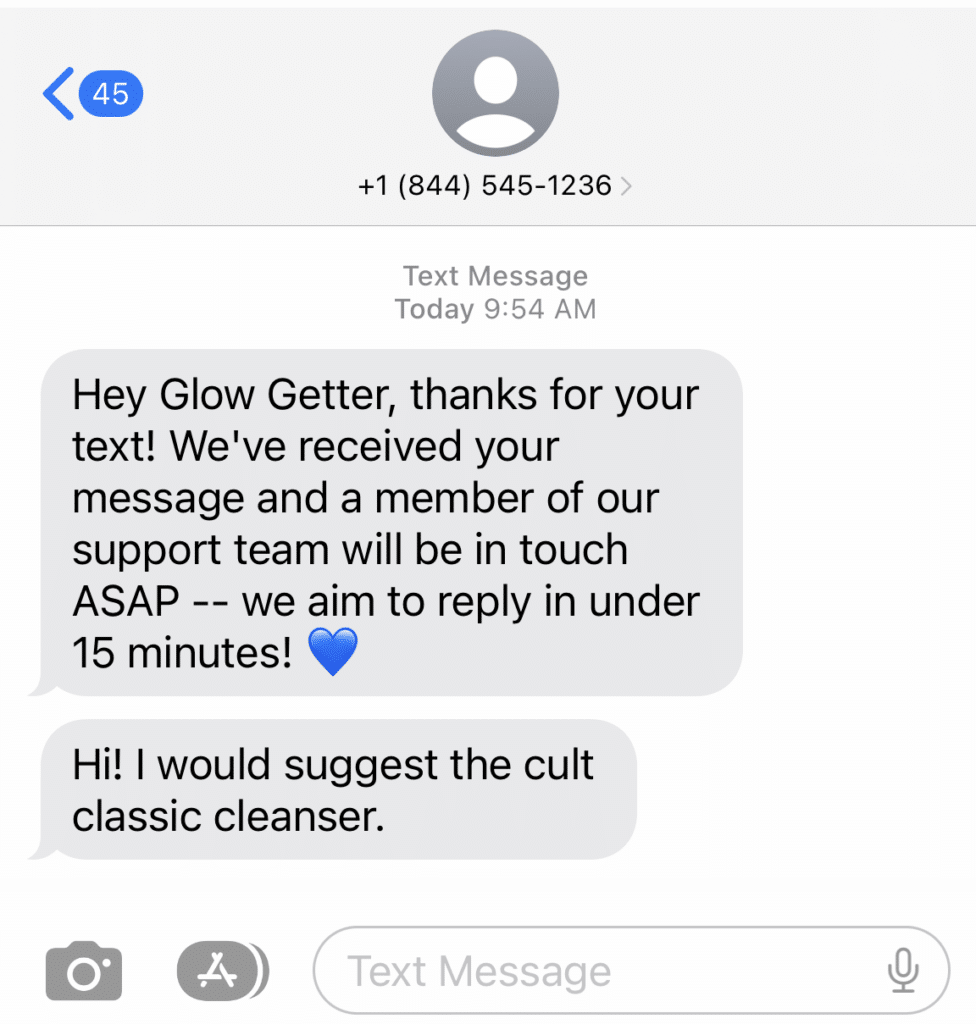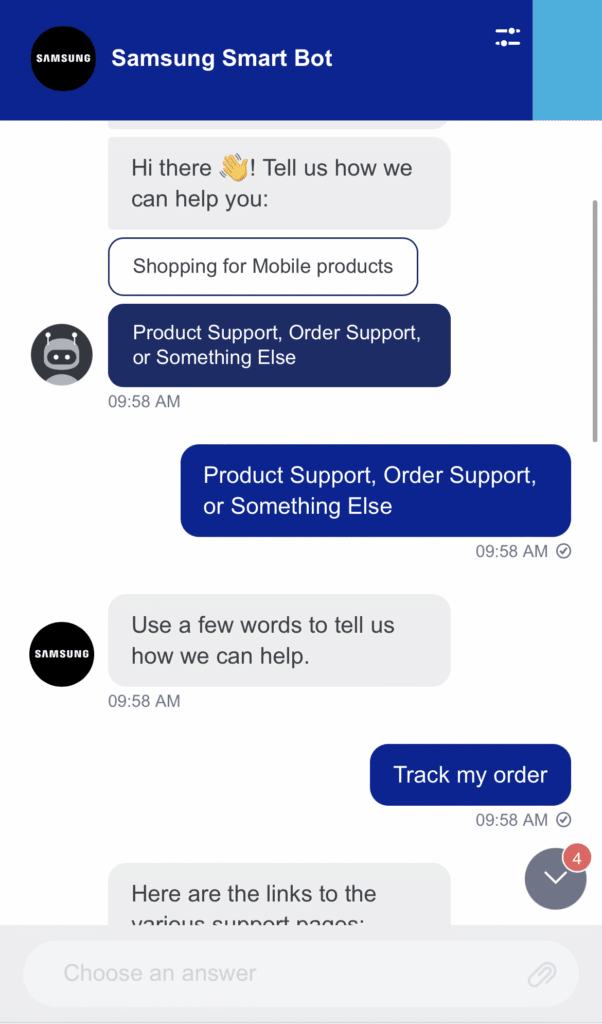Why Conversational Commerce is a Winning Strategy for Reaching Shoppers Across Generations

Each generation has unique shopping habits and preferences. As such, a strategy that resonates with one generation of shoppers may fall flat for another.
Yet, there’s one strategy winning brands are leveraging to connect with consumers of all generations: conversational commerce.
Read on as we take a closer look at each generation – and explore why conversational commerce is the ideal way to connect with them throughout the purchase journey.
What is Conversational Commerce?
Conversations have always been a powerful way for businesses to build connections and grow sales. As consumer preferences shift, a growing portion of these conversations take place online.
Conversational commerce is the practice of engaging with consumers throughout the purchase journey via conversational channels including:
- Live chat
- Social media messaging
- SMS
- Messaging apps
The ultimate goal of these conversations is to grow sales.
Brands that are most successful with conversational commerce leverage a combination of AI and human interactions. For example, simple inquiries can be addressed via chatbots or digital assistants. More complex matters are addressed by human customer care teams.


E-commerce is perhaps the most obvious example of an industry that can benefit from conversational commerce. However, brands across industries – from financial services and healthcare to travel and real estate – are tapping into conversational commerce as a way to connect with consumers throughout the purchase journey and ultimately, drive sales.
Conversational Commerce for Generation Z

Generation Z (also referred to as Gen Z or Zillennials) is the cohort of consumers born between 1997 and 2012. Sure, they’re young; Gen Z’ers will turn 11 to 26 years old this year. But their spending power is growing – and fast. According to research from Bank of America, Gen Z’s purchasing power is expected to represent $33 trillion by 2030 – which is 27% of the world’s income. Then, the following year, Gen Z’s income is predicted to surpass that of Millennials.
Not only do they have large (and growing) purchase power, but they’re also setting trends – which will impact consumer behavior across all generations. Brands simply can’t afford to ignore Gen Z’s unique preferences.
Gen Z consumers are digital natives; they don’t remember a time without the internet and mobile phones. So it’s not surprising that many opt to shop online – often from a mobile device. According to Insider Intelligence, nearly a quarter (73%) of Gen Z’ers do the majority of their shopping from a mobile device.
Gen Z shoppers aren’t content with generic, one-size-fits-all experiences. Rather, research tells us a staggering 87% want personalization from brands to which they’re loyal.
In addition, traditional communication methods won’t cut it for Gen Z’ers. According to a recent survey, 85% of Gen Z consumers prefer chat or automated customer service interactions rather than phone calls.
Connecting with Gen Z Through Conversational Commerce
Gen Z’ers are browsing and buying on the go. They want to connect with brands via digital channels, and when they do, they expect outstanding, personalized experiences.
With conversational commerce, brands can meet Gen Z shoppers where they already are. Conversational commerce empowers brands to make connections with Gen Z’ers, grow sales, and boost loyalty.
Conversational Commerce for Millennials
Brands across industries have spent the last decade or so trying to figure out how to win over Millennials. And for good reason. Millennials – born between 1981 and 1996 – hold a lot of power. Today, Millennials are the largest generation group in the U.S. – and they make up over half of the current workforce.
Millennials spend an ever-increasing portion of their budgets online. According to a recent news article, nearly three-quarters (73%) of Millennials plan to spend the same amount or more online this year than last.
Like Gen Z’ers, Millennials expect personalized experiences; 88% want personalization from their beloved brands.
What’s more, over half (58%) of Millennials expect to engage with a brand wherever they choose. Increasingly, they prefer digital channels to make these connections. 63% of Millennials prefer live chat over traditional channels including phone. And three-quarters think text messaging is a helpful way to receive appointment reminders as well as promotions.
Connecting with Millennials Through Conversational Commerce
Millennials have a lot of purchasing power. Brands must understand their shopping and communication preferences – or they’ll miss out on a huge source of revenue.
Increasingly, Millennials are browsing and buying online. With conversational commerce, brands across industries can connect with Millennials and deliver winning, personalized experiences via their preferred channels.
Conversational Commerce for Generation X
These days, brands focus a lot of attention on attracting and retaining the youngest generations. But we can’t forget about Generation X.
Gen X – the cohort born between 1965 and 1980 – continues to hold a lot of purchasing power. Like other generations, many Gen X’ers are shifting a larger portion of their spending online.
Clothing and shoes top the list of categories Gen X’ers are purchasing online. However, they’re also purchasing a wide variety of other types of products online – from beauty and electronics to groceries and pharmaceutical products – and everything in between.
The majority of Gen X’ers (66%) use their mobile phone for online shopping – and another 9% use a tablet.
Gen X isn’t content with generic experiences. Over eight in 10 (82%) expect personalization from the brands to which they’re loyal.
Connecting with Gen X Through Conversational Commerce
Increasingly, Gen X’ers are browsing and buying online. And when they interact with brands, they expect outstanding, personalized experiences – wherever they are on the purchase journey.
By embracing conversational commerce, brands can authentically engage with Gen X’ers throughout the purchase journey. This will drive discovery, conversion, and loyalty.
Conversational Commerce for Boomers
Today, Baby Boomers are the second largest generation group in the United States. And they continue to be a significant force in consumer spending. This cohort – born between 1946 and 1964 – accounts for more than half of spending and the U.S. They’ve also driven more spending growth in the last decade than any other generation.
For Boomers, in-store shopping was once the default. But their habits are shifting. In fact, consumers aged 65 and older are the fastest-growing group of online shoppers – driven, in large part, by the pandemic.
Boomers continue to use traditional channels – including phone and email – to connect with brands. However, many are starting to try (or are open to trying) other channels including live chat, SMS, and messaging apps.
Boomers expect great, personalized experiences throughout the purchase journey – regardless of channel. In fact, 77% want personalization from their favorite brands.
Connecting with Boomers Through Conversational Commerce
In-store shopping is no longer the default for Baby Boomers. Increasingly, these folks are shopping online – often via a mobile device. And in all likelihood, their preference for digital communication channels will continue to grow.
Brands across all industries can tap into conversational commerce as a way to connect with Boomers throughout the purchase journey.
Start Connecting with Shoppers Across Generations via Conversational Commerce
Consumers’ expectations continue to grow. Increasingly, they expect real-time communication with brands whenever and wherever the need arises. And they expect brands to engage with them via their preferred channels. Now’s the time to embrace conversational commerce.
Want to learn how Messaging Studio helps Salesforce brands deliver experiences that attract, convert and retain shoppers across all generations? Request a demo here.